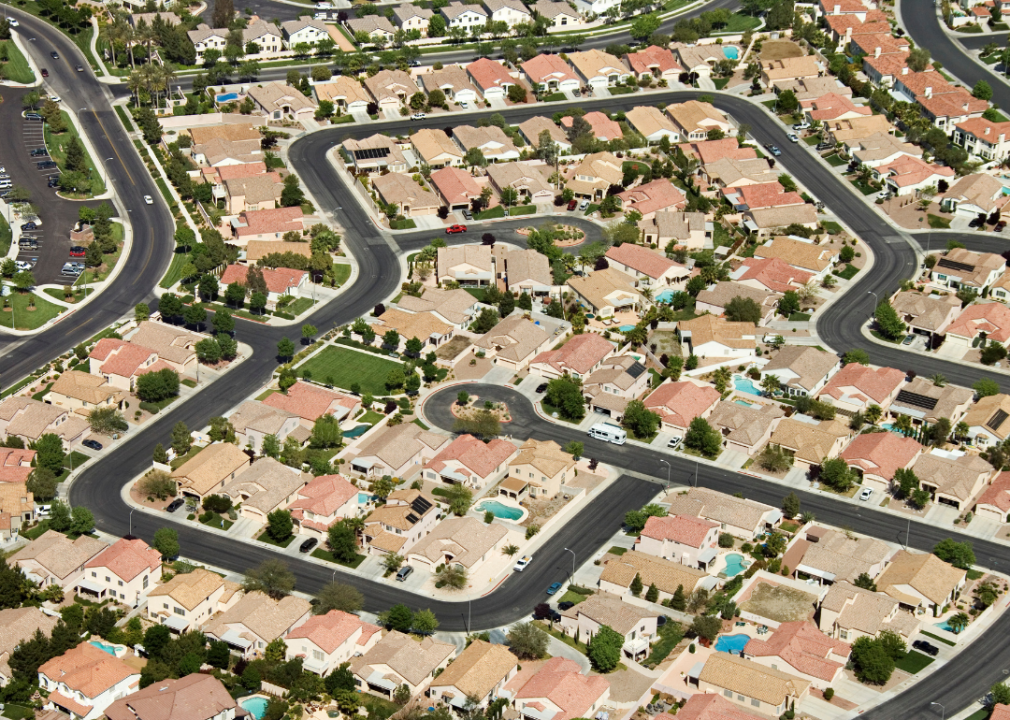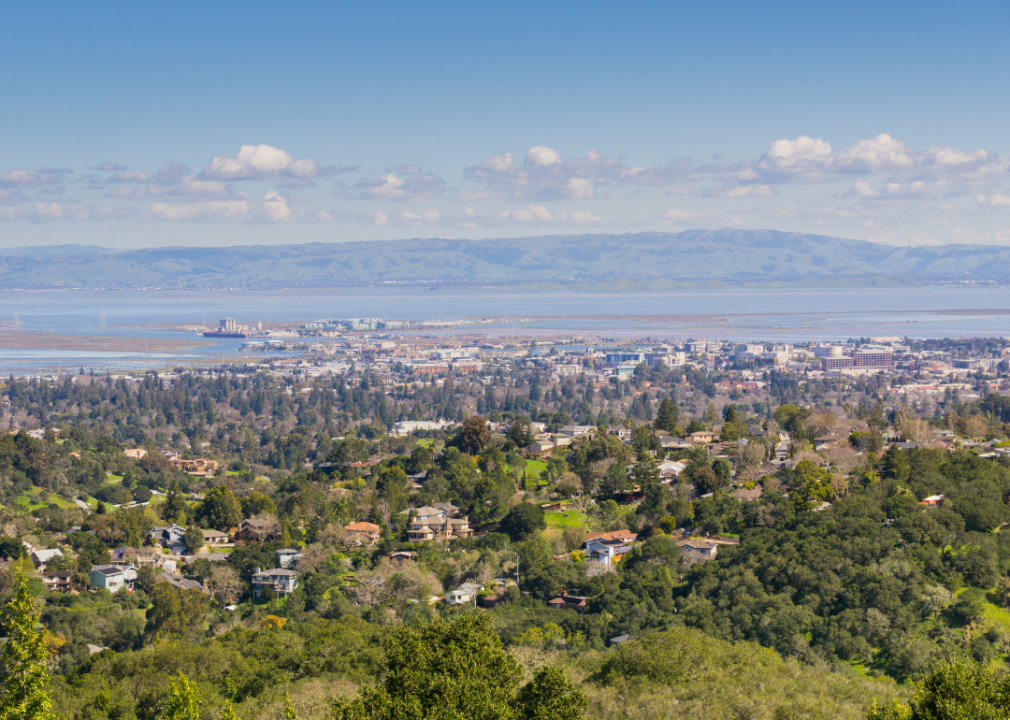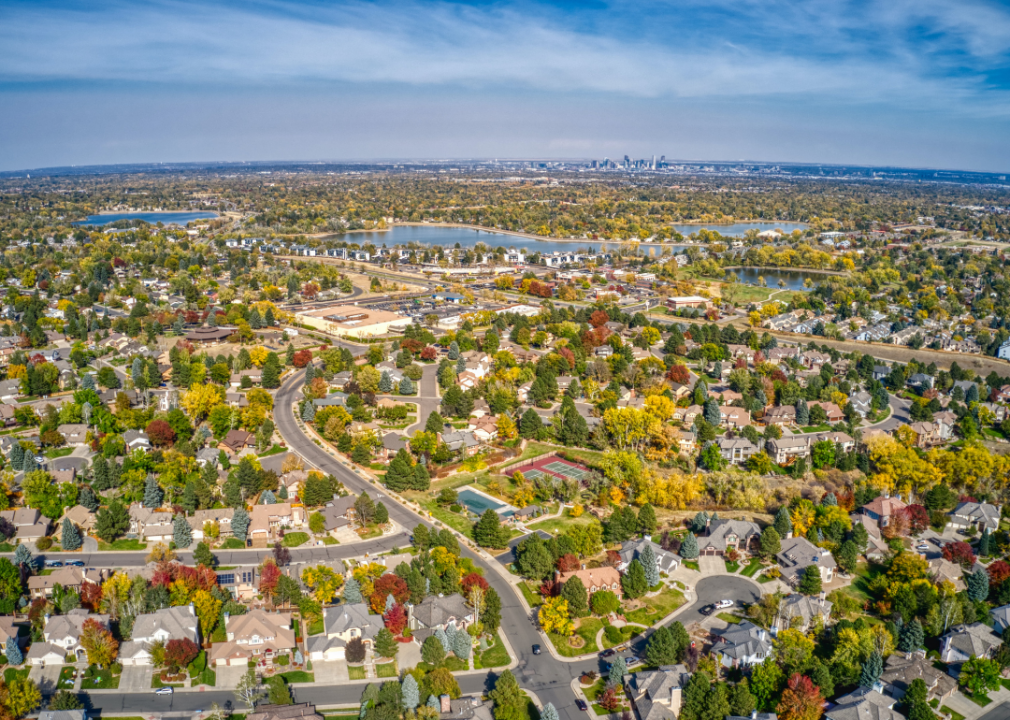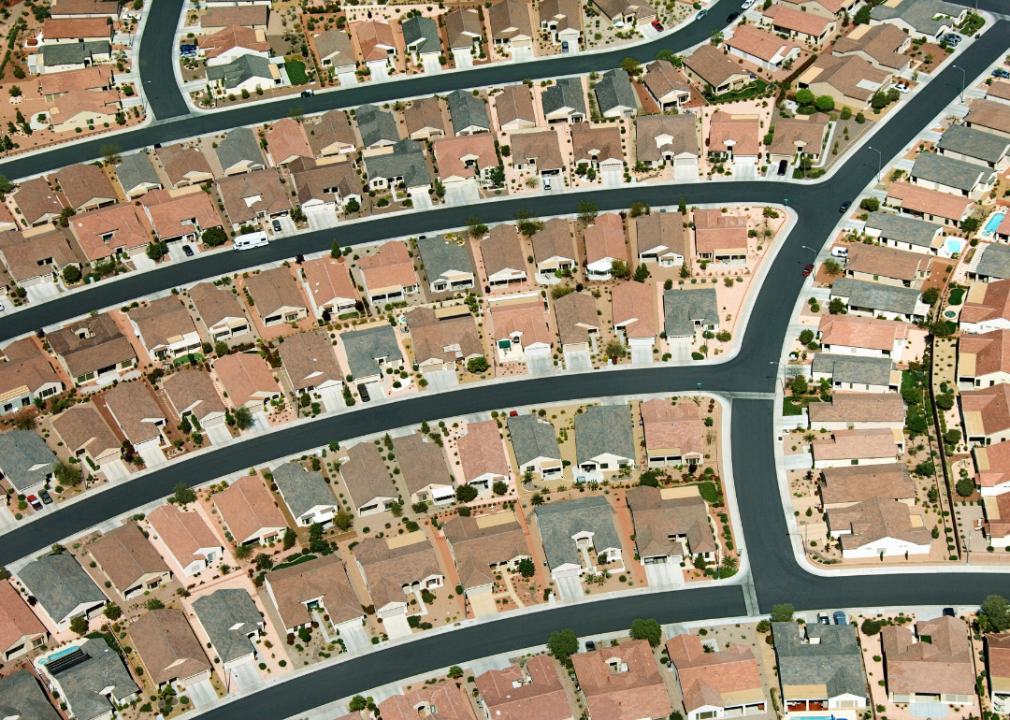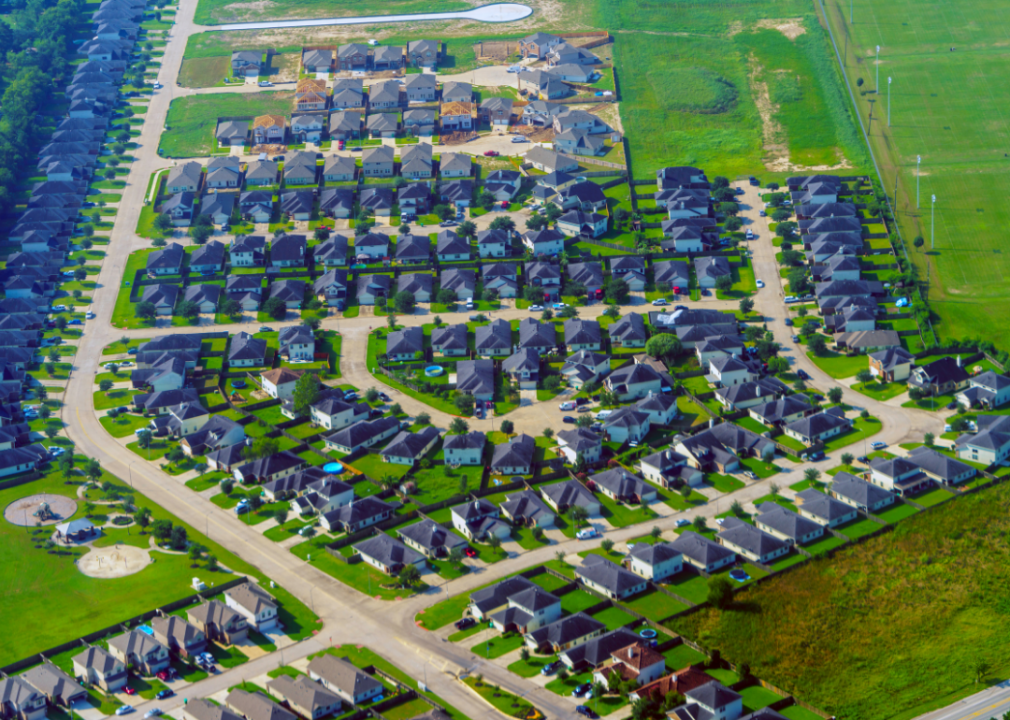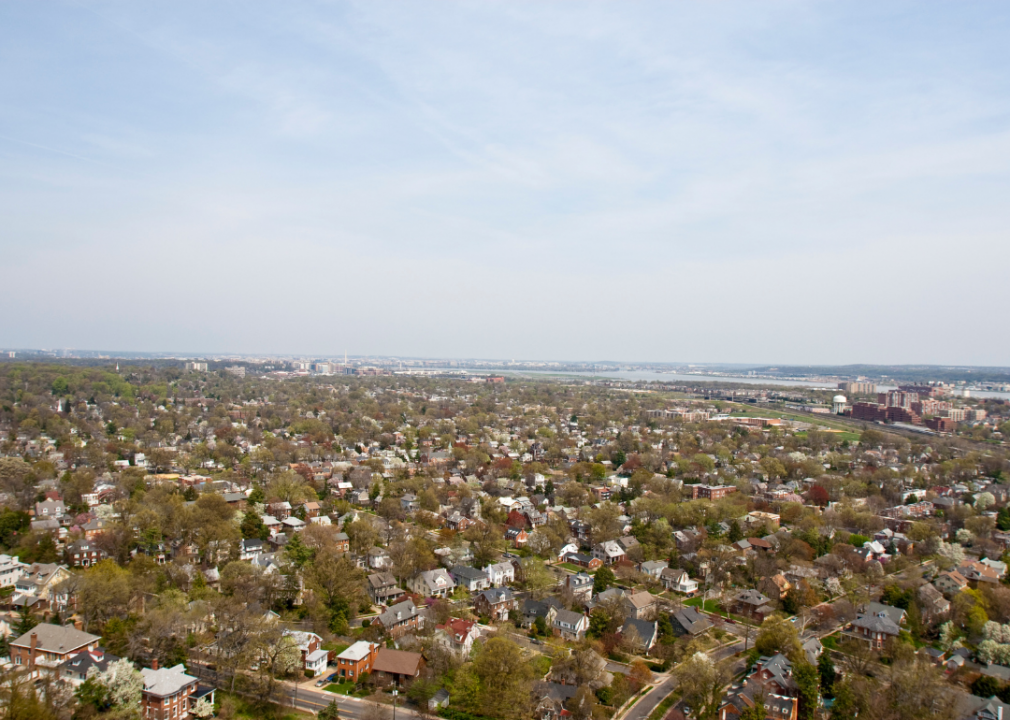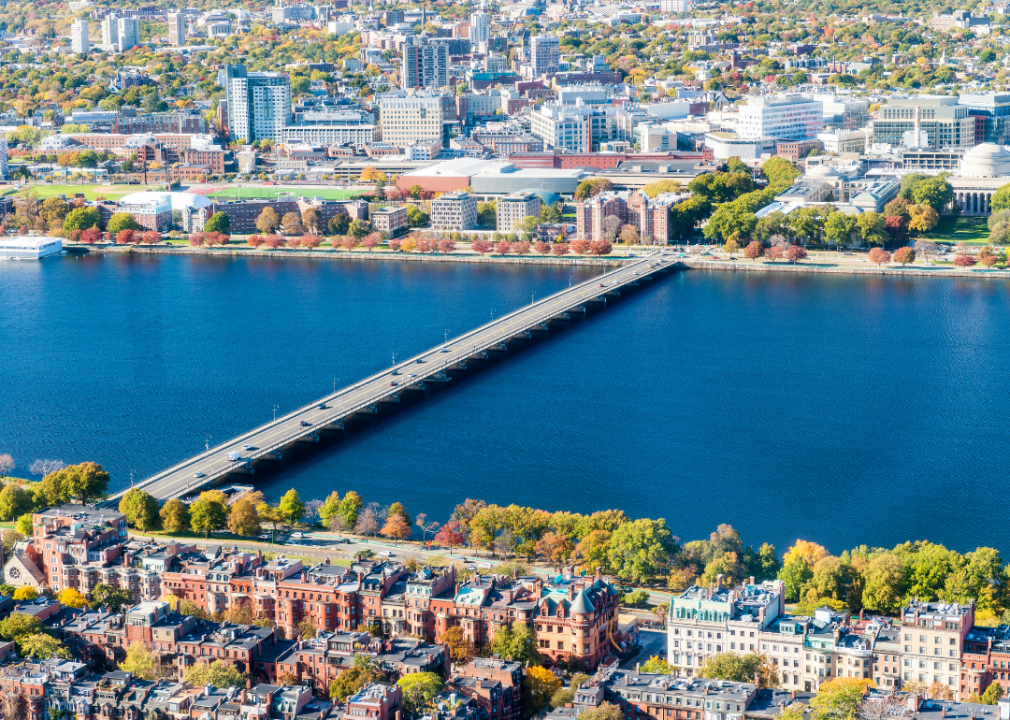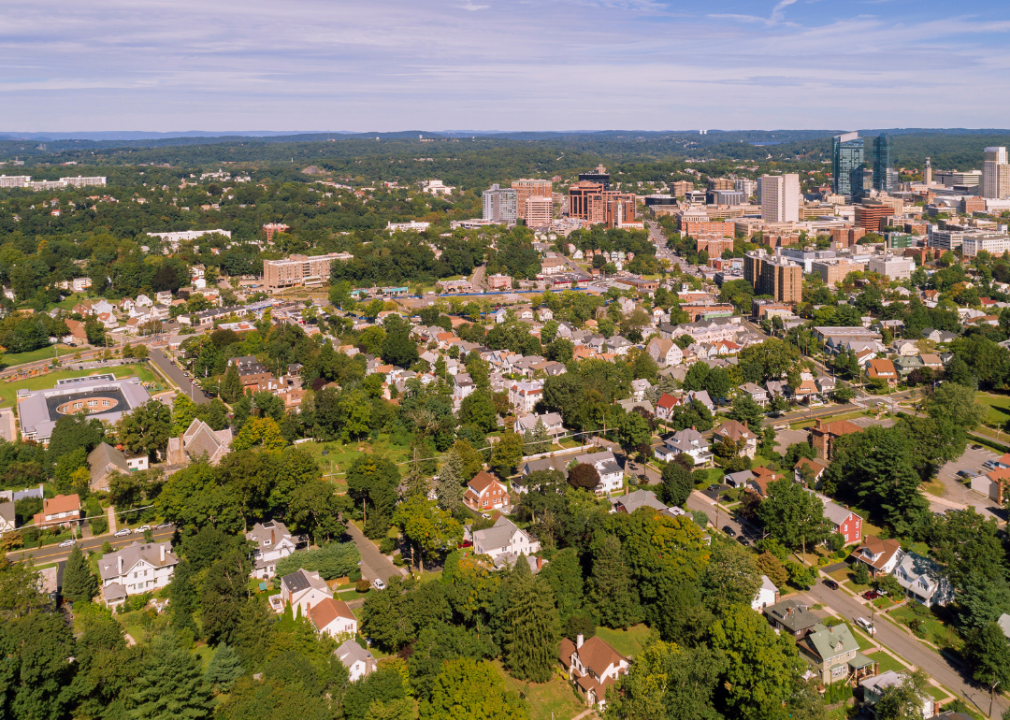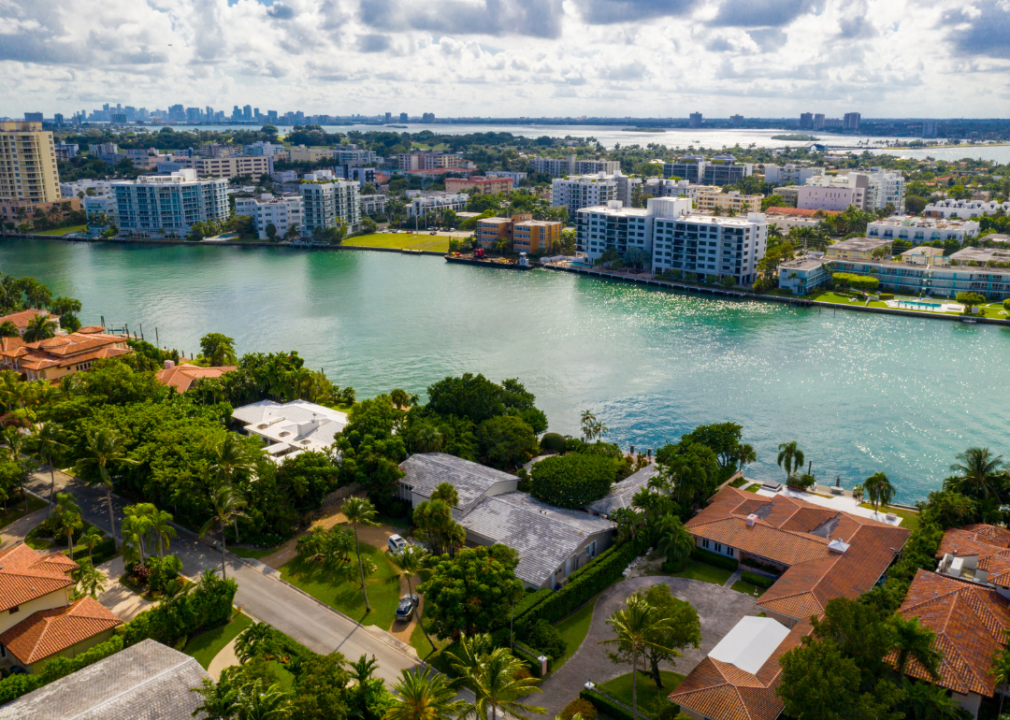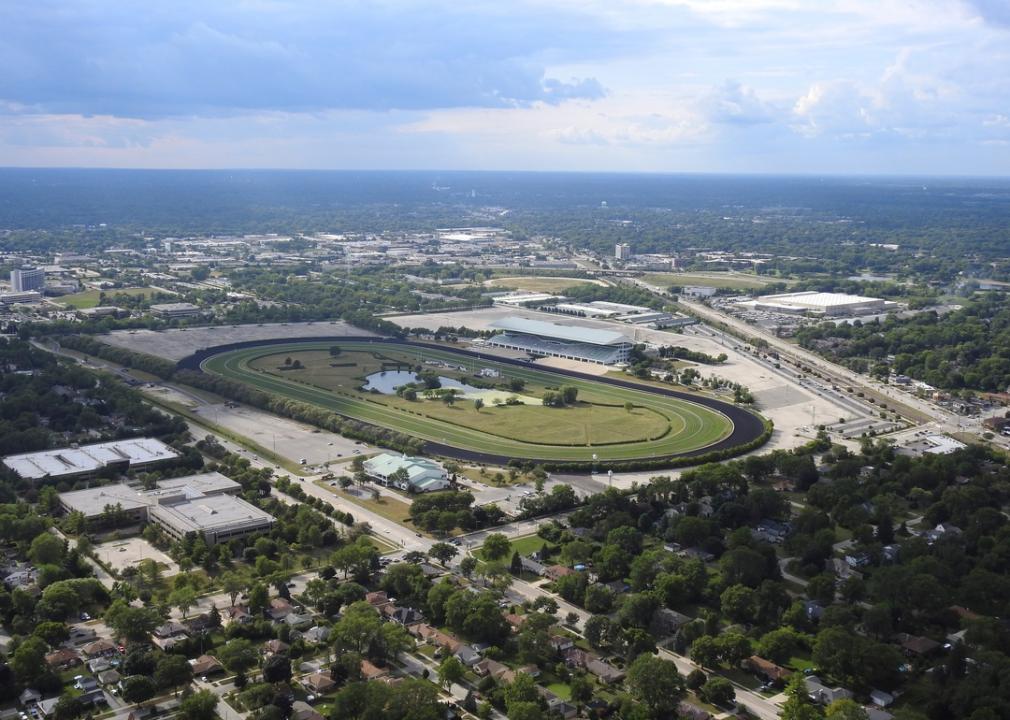Metros where people owe more than their homes are worth
Canva
Metros where people owe more than their homes are worth
The current residential real estate market in the U.S. looks nothing like it did just a few years back. While it was tough for homebuyers to find affordable housing in certain markets—take New York City or Los Angeles, for example—housing was still somewhat accessible in many other markets across the nation.
That’s hardly the case these days, though. Record-low mortgage rates at the start of the pandemic led to a swift uptick in the demand for housing—and it hasn’t slowed down since. The housing market for buyers is now extremely competitive, whether you’re trying to purchase a home in Austin, Texas, or Nashville, Tennessee. There are more buyers than sellers in nearly every market—and to be seen as a competitive buyer, you have to pull out all of the stops. It’s not uncommon to offer major concessions, whether it’s skipping the inspections, a two-week closing, or a cash payment for the home purchase.
And, should a buyer be lucky enough to snag a home to purchase, they may see serious gains shortly after they close. The home prices have continued to skyrocket in many markets across the nation, leading them to gain nearly instant equity, even if there are higher purchase prices to contend with.
That isn’t the case for every homeowner, though. In some metro areas, there has been an uptick in homeowners owing more than their homes are worth. It’s important to pay attention to where these types of underwater mortgages are occurring because they are a clear indicator of market success in an area. In areas where the rates of underwater mortgages are high, it can spell big trouble for homeowners and could signal trouble for the housing market overall.
SmartAsset used September 2021 data from the CoreLogic Homeowner Equity Report to compare 10 metros based on their negative equity shares in the second quarter of 2021. Negative equity refers to a home with a current value that is less than the amount owed on the mortgage. For this story, the data is also compared with negative equity shares in the first quarter of 2021 and the second quarter of 2020. Here’s what the data showed about the metros where people owe more money than their homes are worth.
![]()
Canva
#10. San Francisco-Redwood City-South San Francisco
– Negative equity share in second quarter of 2021: 0.6%
— Change since first quarter: -0.1%
— Change since 2020: -0.1%
As with most other areas across the nation, the San Francisco-Redwood City-South San Francisco metro area in northern California saw an explosion in home purchases at the height of the pandemic. In order to be competitive, buyers had to offer well over the asking price for the homes in this already high-cost area—and many took on huge amounts of housing debt to do so.
What no one expected was that a tech industry exodus, a shift to remote work, and a depressed job economy in the San Francisco area would lead throngs of people to leave the expensive metro for more affordable areas. This reduced the homebuyer competition in the area and caused homebuyer enthusiasm to wane sharply, slowing the uptick in home values in the area. Home sales in the San Francisco metro area are now more sluggish than they were in 2020—and prices, while still high, have also dropped or stayed flat in many parts of the Bay Area in recent months. The end of mortgage loan forbearances is also likely to lead to high rates of foreclosures—which could cause home values to further decline in the area and leave homeowners who owe more than their homes are worth with dwindling home values.
Canva
#9. Los Angeles-Long Beach-Glendale
– Negative equity share in second quarter of 2021: 0.7%
— Change since first quarter: -0.1%
— Change since 2020: -0.5%
Prospective buyers in the Los Angeles-Long Beach-Glendale metro area had to offer well over the asking price to be competitive in the housing market at the height of the pandemic. This led to some buyers taking on massive amounts of debt just to purchase homes, leading to unsustainably high prices for housing. It also led to many homeowners in this area having lower amounts of home equity, or in some cases, negative equity due to an increase in mortgage debt, which was required for many buyers to enter the market.
The housing market in this metro area has now started to cool and is expected to continue doing so through 2022, which could lead to even higher numbers of homeowners owing more than their homes are worth. If the end of mortgage forbearance protections causes an uptick in foreclosures in 2022, home values in this area are likely to drop, adding even more underwater homeowners to the mix.
Canva
#8. Denver-Aurora-Lakewood
– Negative equity share in second quarter of 2021: 1.2%
— Change since first quarter: -0.1%
— Change since 2020: -0.2%
While the housing market in the Denver-Aurora-Lakewood remains extremely competitive, home prices have declined and inventory has increased in this Colorado metro in recent months. That’s a significant departure from what was happening in the Denver metro at the height of the pandemic when home prices were mounting rapidly. At that point, regular buyers had to compete against a surge of investors and cash buyers in the Denver market, which led to making larger offers, taking out larger mortgage loans, and having less money for down payments. In turn, these new homeowners had less equity in their homes—and while the rising home values in 2020 led to mounting equity for homeowners, that instant equity trend slowed down in 2021.
The housing market in the Denver area is now considered to be seriously overvalued—and the growing rates of homeowners with negative equity could become an even bigger issue if home values decline in the near future.
Canva
#7. Las Vegas-Henderson-Paradise
– Negative equity share in second quarter of 2021: 1.3%
— Change since first quarter: -0.7%
— Change since 2020: -1.8%
An influx of investors and wealthy buyers from out of state can quickly change the landscape of a housing market—and while that has been evident across many markets, it’s been a clear issue in the Las Vegas-Henderson-Paradise market.
At the start of the pandemic, the Las Vegas metro area became a real estate hotspot for investors, investment pools, corporations, and wealthy out-of-state buyers. The mad dash for investment properties caused a housing shortage and a swift uptick in home prices, leaving the buyers who were reliant on mortgage loans with no other options but to offer over the asking price to compete. But while these factors played a part in the negative home equity trend in Las Vegas, other factors such as high rates of unemployment early in the pandemic have also played a part.
In November 2020, about 6.15% of Las Vegas-area home loan payments were at least 90 days late due to homeowners’ ongoing financial struggles. That, coupled with homeowners borrowing against home equity, has likely played a large part in the uptick in underwater mortgages in Las Vegas.
Canva
#6. Houston-The Woodlands-Sugar Land
– Negative equity share in second quarter of 2021: 1.5%
— Change since first quarter: -0.1%
— Change since 2020: 0.0%
At the start of the pandemic, Texas’ Houston-The Woodlands-Sugar Land metro area had a staggering uptick in unemployment rates that caused financial hardships for homeowners who were suddenly unable to pay their mortgage notes. While the option for mortgage forbearance helped these homeowners avoid losing their homes to foreclosure, the mounting mortgage debt from delayed payments helped to contribute to higher rates of negative home equity in this metro area.
An increase in demand for home purchases also occurred as mortgage interest rates fell, which led to soaring home prices and fierce competition for homes in Houston. In order to be competitive, some buyers had to take on higher amounts of mortgage debt to purchase homes, leaving them more vulnerable to home value fluctuations.
Early 2021 also brought with it high rates of refinancing nationwide—including refinances in which homeowners borrow against their equity—which may have also helped to drive the uptick in underwater home loans in this metro area. The Houston metro area housing market has remained strong through the pandemic, but with the end of mortgage forbearance protections, there could be a rise in foreclosures in this area—and another uptick in the percentage of homeowners owing more than what their homes are worth.
Canva
#5. Washington-Arlington-Alexandria, DC-VA-MD-WV
– Negative equity share in second quarter of 2021: 1.7%
— Change since first quarter: -0.4%
— Change since 2020: -1.4%
There is no question that the housing market in the Washington-Arlington-Alexandria metro area was on fire during the pandemic, with buyers forced to offer extremely high purchase prices to compete. This led to some buyers taking on large amounts of mortgage debt to be competitive—but the housing market in the area has cooled, with a steady drop in the median sales prices across this region in recent months.
Homeowners who take on high amounts of mortgage debt with smaller down payments are more vulnerable to housing market fluctuations, as a drop in home values can quickly put them underwater on their homes. That is likely contributing to the uptick in the number of people who owe more than their homes are worth in this area—and a high rate of delinquent mortgages in this area may be adding to the issue. Those buyers who purchased their homes at the peak of the housing shortage may also have seen a decline in their home values recently thanks to the cooling housing market—which could be another factor.
It appears that the Washington, D.C.-area housing market may stay cool in the near future, too, which could make it even easier for homeowners to end up owing more than their home is worth in this metro.
Canva
#4. Boston
– Negative equity share in second quarter of 2021: 1.9%
— Change since first quarter: -0.3%
— Change since 2020: -0.9%
The housing market in the Boston metro area was brutal for buyers during the first year of the pandemic. Homes were in high demand by all types of buyers, and the competition for homes led the median price of single-family homes to hit a record high of $780,000. That sky-high median home price made it tough for buyers with modest incomes to compete—and many would-be homeowners opted to take on a ton of mortgage debt to compete.
Things have since cooled down, today’s flat prices may have caused some homeowners who purchased at peak prices to be underwater on their home loans. Mortgage delinquency rates are now on the rise and the mounting debt from delinquent payments may be adding to the increase in the percentage of homeowners who owe more than their homes are worth.
Canva
#3. New York-Jersey City-White Plains, NY-NJ
– Negative equity share in second quarter of 2021: 3.1%
— Change since first quarter: -0.2%
— Change since 2020: -1.1%
Unlike many of the other metro areas in the nation, the New York-Jersey City-White Plains metro area was slow to see an uptick in demand for home purchases during the pandemic. New York City saw mass exodus rather than crushing demand by buyers, which caused a drop in home prices rather than an uptick and led to a decline in home values.
The problem was exacerbated by high rates of unemployment after shutdowns and closures took hold, which caused high rates of homeowners to suddenly be unable to pay their mortgage loans. This type of compounding mortgage debt makes it more likely that homeowners will end up owing more than their homes are worth, even when forbearance programs protect them from foreclosure. Things have since normalized with the housing market in the area—and prices have started to rise in some areas—but New York City still has significantly higher levels of mortgage distress than the rest of the state.
Canva
#2. Miami-Miami Beach-Kendall
– Negative equity share in second quarter of 2021: 4.1%
— Change since first quarter: -1.4%
— Change since 2020: -3.6%
The housing market in Florida’s Miami-Miami Beach-Kendall metro area has one of the highest rates of people who owe more on their homes than they’re worth, and there are a few factors contributing to the issue. One of the main issues stems from the fact that the Miami metro area market was so hot during the height of the pandemic that it was tough for buyers to land contracts without over-asking offers. This led to some buyers taking on massive amounts of mortgage debt to compete with other buyers. But now that the housing market has cooled in this metro, these homeowners are at higher risk of sinking underwater due to decreases in value.
As of July 2021, a high rate of delinquent mortgages—about 6.6% in the Miami metro—was likely also contributing to the uptick in underwater homeowners. Home sales have continued to slow over the last few months in the Miami metro area, which is likely to continue helping to drive the trend of homeowners in this area owing more than their homes are worth.
Henry C Jorgenson // Shutterstock
#1. Chicago-Naperville-Arlington Heights
– Negative equity share in second quarter of 2021: 5.2%
— Change since first quarter: -0.9%
— Change since 2020: -2.0%
The housing market in the Illinois metro area of Chicago-Naperville-Arlington Heights was booming at the start of the pandemic. This led to a housing shortage and rapidly increasing home prices in the area, and stiff competition from buyers who had to make huge offers to be considered by sellers. In turn, there was a trend in which buyers borrowed huge amounts of money to purchase homes—and for lucky owners, a quick gain in equity as home prices surged upward. That swift uptick cooled earlier this year, though, leaving homeowners who bought at the peak of the price wars vulnerable to market declines.
Other issues—like the fact that about 5% of Illinois home loan holders were behind on payments or facing foreclosure as of July 2021—have helped add to a high rate of underwater homeowners in this area. And, if the expected widespread foreclosures occur in the Chicago area in the near future, it could further cause home values in the area to nosedive, making it hard for homeowners who purchased homes with mortgage loans during the pandemic to stay afloat.
This story originally appeared on SmartAsset
and was produced and distributed in partnership with Stacker Studio.
